Both the Lake District and Peak District are popular destinations for outdoor lovers. With both places boasting untouched natural beauty, incredible views and unique attractions, it can be tough to choose which one to visit. This guide will help you decide.
The ongoing debate on whether the Lake District or Peak District is better, is one that is difficult to win. In truth, both places are beautiful – it just depends on what you’re looking for. Not only does each place present an abundance of things to see and do, but they both also offer something unique.
Let the battle begin! Will you choose to visit the Lake District or the Peak District?
Disclaimer: Hi! this post may contain affiliate links which will take you to online retailers that sell products and services. If you click on one and buy something, I may earn a commission, see my Affiliate Disclosure for more details.
Lake District
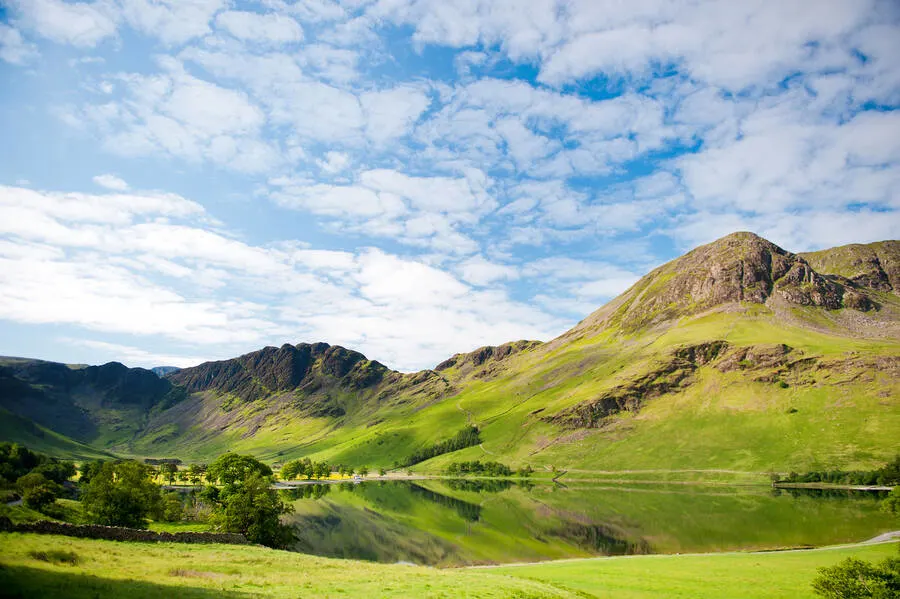
At just under 600,000 acres, the Lake District is England’s largest National Park, located in the county of Cumbria. In 2017, it was granted UNESCO World Heritage Site Status, and it’s not difficult to see why.
The Lakes are home to wild landscapes – from huge lakes and meres to dramatic pikes and fells. It’s also where you’ll find Scafell Pike, which at 987 metres, is the highest peak in England.
It comes as no surprise that the natural beauty of the Lake District has inspired writers and poets for centuries, and shaped the writings of people like William Wordsworth and Beatrix Potter. But it’s not just about the outdoors – it’s a great place to delve into history with a range of fascinating attractions.
How to get there and travel around
Fortunately, the Lake District is pretty easy to get to. If you’re wanting to arrive by train, the West Coast mainline runs to the east of the Lakes, connecting Oxenholme, Penrith and Carlisle with London and Glasgow.
You can also catch a direct train from Manchester to Windermere. You’ll also find some local trains running in the area, stopping at Kendal, Staveley and Windermere. If you’d rather travel by coach, National Express runs coaches to various towns in the area from all over the UK.
Once you’re in the Lake District, the easiest way to get around is by car. Some of the best areas are quite remote and won’t necessarily have public transport connections.
Want to travel around a lake in one day? A great way to explore the actual lakes is to take a steamer or boat cruise. Windermere, Ullswater, Coniston and Derwentwater all have passenger boats with multiple stops, and this can be a fun way to see different sections of the lakes.
Full-day tours are also offered from Windermere and Oxenholme which is a great way to see the Lake District if you don’t want to rent a car and get the most out of your visit!
Activities
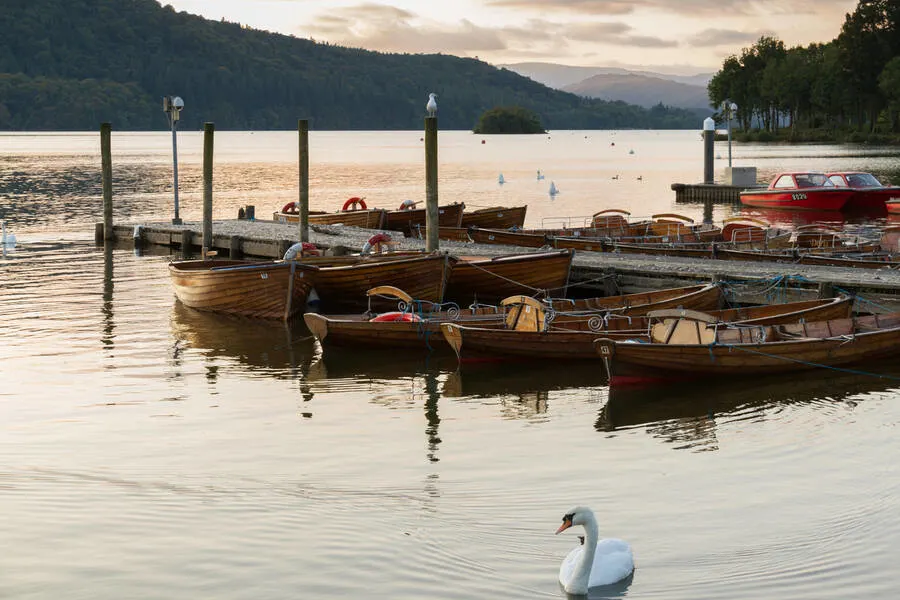
Walks
It goes without saying that walking is one of the best ways to explore the Lake District. It would be impossible to list all of the walks in the area, as there’s a walk for every level and ability, whether you’re after a gentle stroll or a challenging climb. There are also guided walks led by local experts which run from April to October each year.
If you’re a first-time hiker, start out with the iconic Tom Gill to Tarn Hows route. Its pathway was actually gifted to the National Trust by Beatrix Potter, and is accessible to buggies and mobility scooters.
Another easy walk is the Buttermere to Rannerdale route. This scenic walk will take you past the most photographed trees in the UK – the Sentinels. Stroll past Crummock Water and spot the highest waterfall in the Lakes, Scale Force.
If you have a bit of stamina, a great hike is Howtown to Glenridding. On the three hour trek, you’ll pass Ullswater lake and go through Patterdale village. You can even switch things up and return via the ferry boat.
Another fab medium-level walk is Thirlmere to Blea Tarn. This walk takes three to four hours, but boasts some fantastic scenery.
Up for a challenge? There are plenty of walks that can take you the entire day. One of these is the Fairfield Horseshoe. Beginning and ending in Rydal, the route covers 16km with stunning views over to the Helvellyn range. You’ll encounter grassy mountains, tarns, rocky steps, open plateaus and steep ridgelines.
Another challenging climb is Helvellyn Ridge, one of the best ridge walks with views across the whole of the Lakes. This 10km route isn’t for the faint hearted!
Cycling
The Lake District is a haven for cyclists, whether you’re a road cyclist or a mountain biker. There are a wide selection of country lanes, cycleways and bridleways to suit every ability. Some of the best mountain bike routes are located in Whinlatter Forest and Grizedale Forest. These routes are suitable for beginners all the way through to professionals.
A great route for beginners is Windermere Western Shore. This is an 8 mile return route which takes you around the scenic western side of lake Windermere, with only a few gentle slopes.
Fancy something on a more moderate level? The Grasmere Trail is a 10 miles return route which takes you from Ambleside to Grasmere and back. Mostly off-road or on quiet lanes, it boasts some incredible views of Rydal Water and Loughrigg Fell.
If you’re an experienced cyclist, the Lakes don’t disappoint. One very challenging (but completely worth it!) route is the Great Mell Fell and Little Mell Fell Cycle Loop. It’s 17.3 miles long, and is surrounded by the gentle rolling fells of the northern side of Ullswater. Start and finish at Pooley Bridge, where you’ll find cafes and pubs to refuel.
If you don’t actually own a bike, don’t worry – there are tons of places you can hire a bike in the Lake District. Some of these are Coniston Boating Centre, Windermere Bike and Cycle Hire Centre, Grizedale Mountain Bikes and Keswick Bikes.
Watersports
With all those bodies of water, it would be a shame not to actually get out on the water. There are a multitude of water-based activities, from canoeing and sailing, to windsurfing and diving. You’ll find most of the action happens at Coniston Water, Derwentwater, Ullswater and Windermere.
There are plenty of watersport centres in the area that offer a range of activities and hire equipment. Some of the most popular ones are Windermere Outdoor Adventure Centre, Hodge Howe Watersports Centre, Bowness Bay Marina and Coniston Boating Centre.
Other attractions
The Lake District has a lot more to offer than just walking and cycling. There are plenty of other outdoor activities to get involved in, like horse riding, rock climbing and abseiling.
There are also a multitude of activities which aren’t for the sporty type, whether it’s exploring historic houses and castles, discovering the area’s industrial past or taking a ride on a heritage railway.
If you’re a fan of historic houses, you won’t be disappointed. There are so many stately homes, castles and manor houses that are open to the public, some of which are still occupied by the same families who have been there for hundreds of years. One of the must-sees is the breathtaking Muncaster Castle, set within over 70 acres of gardens.
If you’re a fan of Beatrix Potter, you can’t miss The World Of Beatrix Potter attraction. Take a look at the interactive exhibits which tell the story of her writing and her significance to Lakeland conservation. Other attractions related to Beatrix Potter include the Beatrix Potter Gallery and Hill Top.
The Lakes have a long industrial heritage from when copper and lead mines were booming. You can visit Coniston Copper Mines, Myers Head lead mine and Honister Slate Mine to get a feel of what it was like during the 1600-1700s. Stott Park Bobbin Mill is now a working museum, where you can see the original machinery used to make wooden bobbins for the spinning and weaving industries.
A fun and unique way of taking in the views is from a steam train. There are several heritage railways in the Lake District, including the Ravenglass and Eskdale Railway, Lakeside and Haverthwaite, South Tynedale and the Threlkeld Quarry Railway.
You can’t miss picking up some famous Grasmere Gingerbread! It’s something that should be on English souvenir list!
Where to stay
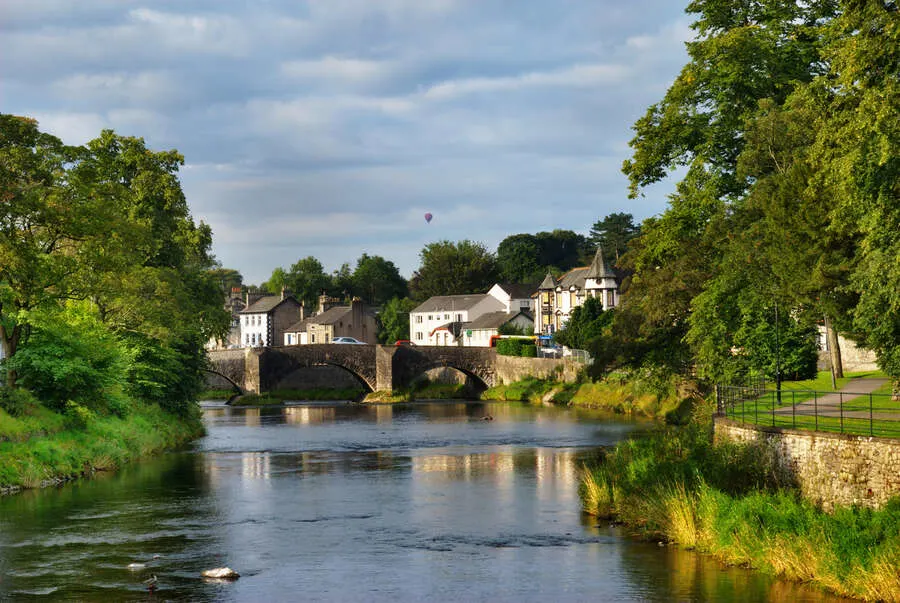
Whether you’re looking for a hostel, holiday cottage or luxury hotel, there is a huge range of accommodation options in the Lakes. It can be quite tricky picking a place to stay, as the towns and villages are so spread out. Here are some of the best areas to find accommodation:
- Windermere and Bowness-on-Windermere: these twin towns have been attracting holidaymakers since 1847. You’ll find everything you want, including a wide choice of accommodation, shops, pubs and restaurants.
- Ambleside: this small village in the heart of the Lakes is a great base for exploring the region. There is a fantastic selection of activities and facilities, including restaurants, pubs, two cinemas and the famous Stagshaw Gardens.
- Keswick: one of the largest towns in the Lakes, Keswick is a fab place to base yourself if you want to explore the northern Lakes. There is a large range of accommodation, as well as plenty of outdoor equipment shops. The peaks of Helvellyn, Skiddaw and Scafell are nearby, as well as Derwentwater.
- Grasmere: slightly north of Ambleside, Grasmere is a pretty village perfect for those of you looking for a quiet and relaxing place to stay. It’s a great place to find cheap accommodation, with a pick of good value hostels and guesthouses.
- Kendal: this market town is located on the southern border of the Lake District. While it’s packed with shopping, dining and sightseeing options, it also offers easy access to hiking trails. It’s a great place if you’re looking for the best of both worlds.
Camping can also be a great option for accommodation. There are a wide range of campsites dotted all around the Lakes, and range from basic to luxury. It’s important to note that wild camping isn’t permitted anywhere in the Lakes without prior permission from the landowner.
What makes it unique?
By now, you’ve probably realised that the Lake District has a lot to offer. What makes it stand out is the range of distinctive and dramatic landscapes it has. You have a mix of lakes, mountains and craggy peaks all in one area.
Another highlight is that there are plenty of things to do even for the less active amongst us, including a ton of history and heritage to explore.
Peak District
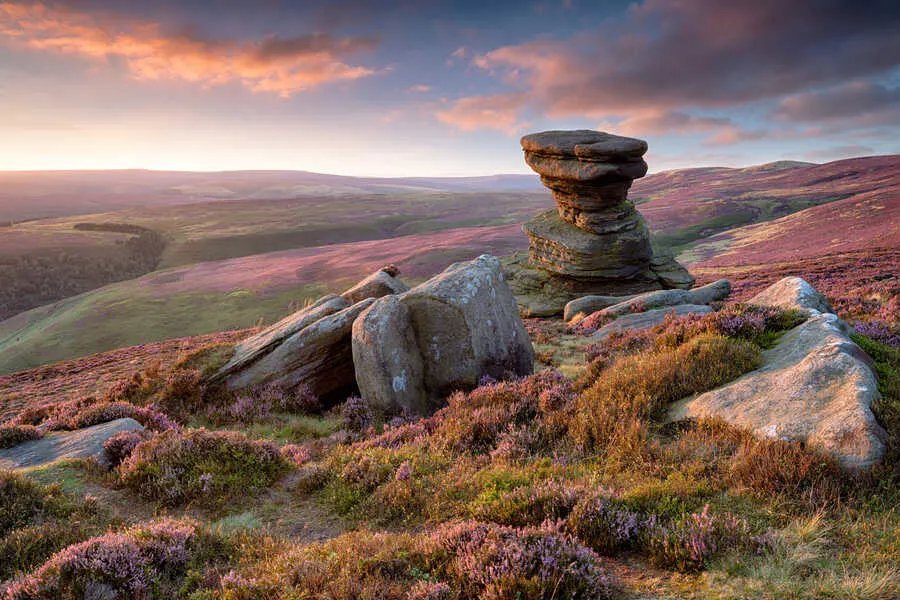
The Peak District National Park is spread out over 355,090 acres and spans the counties of Derbyshire, Cheshire, Staffordshire, Yorkshire and Greater Manchester. The park is broadly split into two.
To the south, you have the White Peak which incorporates wooded dales, craggy hills and limestone gorges. To the north, you have the Dark Peak which features wild heather moorlands and gritstone crags, as well as Kinder Scout, which at 636 metres is the highest point in the Peaks.
This fantastic and varied landscape is what made the Peak District become the UK’s first ever National Park back in 1951. As well as natural landscapes, the area is also full of pretty towns and villages, ancient settlements and historic houses and gardens.
How to get there and travel around
The Peak District is very accessible, with an extensive public transport network. This makes it easy to get to if you don’t drive.
One of the easiest ways to get to the Peaks is by train. The cities which neighbour the Peak District, such as Manchester and Sheffield, all have rail services from destinations around the country. From these cities, it’s easy to catch local services into the Peak District. Northern Railway, East Midlands Railway and TransPennine Express all have lines which run through smaller towns in the Peaks.
If you’re arriving by coach, National Express and Megabus have coach routes from different spots around the UK which link with destinations around the Peak District. From here, you can take onward local buses or trains.
Once you’re in the Peak District, getting around is pretty easy. If you don’t drive, there are a number of bus connections which connect local towns and villages within the District.
Staying in Machester? There are day trip tours you can take to the Peak District like this full-day Peak District guided tour by bus.
Activities
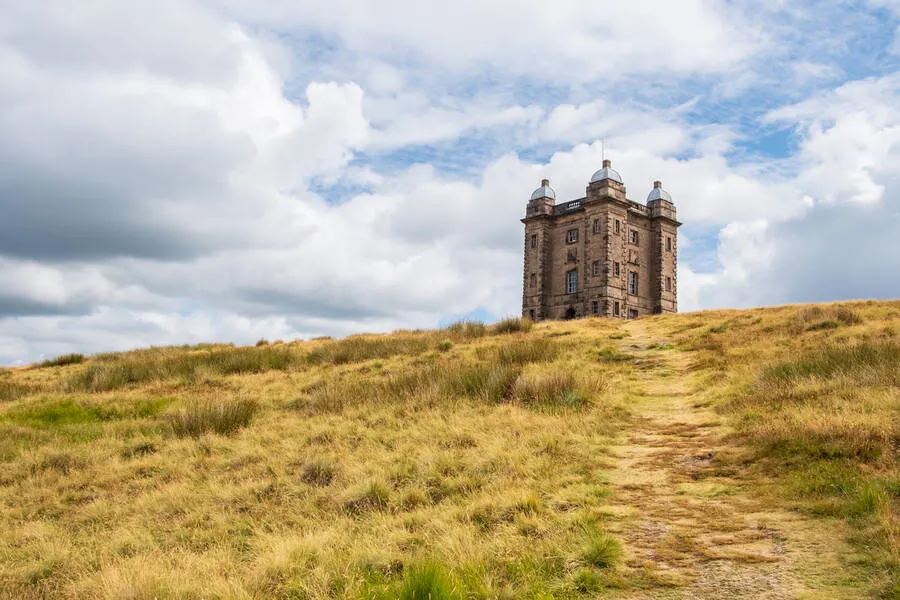
Walks
The Peak District is a walker’s haven. There are all kinds of walks, from easy rambles through pretty valleys, to challenging climbs with epic views. Whatever your fitness level is, you’re bound to find a walk that’s right for you.
If you’re after a nice and easy stroll, the Mam Tor Walk is a fantastic trail that takes in one of the Peak’s most iconic views. This 4.5km circular route is steeped in ancient history, and you’ll be rewarded with views of the Vale of Edale, Peveril Castle and the Hope Valley.
Another easy but scenic route is the Padley Gorge Hike. This 6km trail takes you from the beautiful Longshaw Estate, through Burbage Valley to the village of Grindleford.
Fancy something a little longer? The Dovedale Walk is an incredible 11.6km trail that takes you along the River Dove, going past some impressive limestone features. At the summit of Bailey Hill, you’ll find some stunning panoramas.
The 9.2km Thor’s Cave and the Manifold Valley Hike is a fantastic walk around the hidden Manifold Valley. Follow a subterranean river system and hike through one of the largest natural caverns in the Peaks.
Now, it wouldn’t be a hike in the Peaks without something really challenging. A must-do is the Kinder Scout Walk. This 14.5km walk is on the Dark Peaks’ most physically demanding terrain, but with its breathtaking views and alluring charm, it’s completely worth it.
Not quite up to it? The Stanage Edge Walk is a 9.8km walk that’s physically demanding but still enjoyable. It takes you through a beautiful valley landscape (where Charlotte Bronte took inspiration from) and up onto the Stanage escarpment for some epic views.
Cycling
The Peak District offers a lot to cyclists, whether you’re a road cyclist or a mountain biker. There are plenty of quiet backroads as well as challenging gradients, all of which go through some magnificent scenery.
There are plenty of easy going routes which are mainly traffic-free, perfect for families and beginners. There are easy trails at Monsal, Manifold, Tissington, High Peak and Thornhill.
If you’re looking for a medium level route, the Derwent Reservoirs offer a 15 mile cycle which encompasses the three reservoirs in the Upper Derwent Valley. A mix of road and track, the route is particularly great for birdwatching.
A challenging route that’s reserved for experienced cyclists is the High Peak Trail. At 18 miles one way, you’ll need the whole day to complete it in both directions. The dismantled railway cuts across limestone uplands and through countryside with a rich industrial heritage. You’ll come across breathtaking views and wide open vistas.
There are many places you can hire a bike in the Peaks. The Peak District National Park has four bike hire centres, and you’ll find them in Ashbourne, Derwent, Parsley Hay and Manifold.
Climbing
The Peak District is home to some of the most challenging rock climbing routes in Europe. Whether you’re a beginner or an experienced climber, there are plenty of crags for you to discover.
Some of the most popular spots to climb for beginners include Burbage South Boulders and Windgather Rocks. If you’re an advanced climber, then you’ll enjoy the climbs at Stanage Edge, Froggatt Edge, Curbar Edge and Burbage North.
If it’s your first time rock climbing, a good place to start is at one of the outdoor activity centres where you’ll find instructors who can show you the ropes (literally). Some of the most popular centres are The Adventure Hub, Lost Earth Adventures and The Peak Climbing School.
Caving
Caving is another highly popular activity in the Peak District. The area is home to Titan Cave, the highest natural cavern in the UK which stands at 141.5m.
If you’re a beginner, it’s best to use an expert. There are numerous activity centres in the Peak District that offer caving days out with trained and qualified instructors. You’ll also be provided with all the equipment you’ll need.
Some of the best climbing centres are Lost Earth Adventures, Dolomite Training, Acclimbatize Ltd and Pure Outdoor.
One of the must-sees is the Heights of Abraham. This 60 acre hilltop park is accessible via a cable car journey over the Derwent Valley. You can take a guided tour into two well known caverns: the Great Masson Cavern and the Rutland Cavern & Nestus Mine which were both mined for lead ore and fluorspar.
Another must-see is Poole’s Cavern. This natural limestone cave dates back to two million years ago. Take a guided tour down into the depths to explore the extensive caverns and learn how crystal stalactites and stalagmites have formed over time.
Other attractions
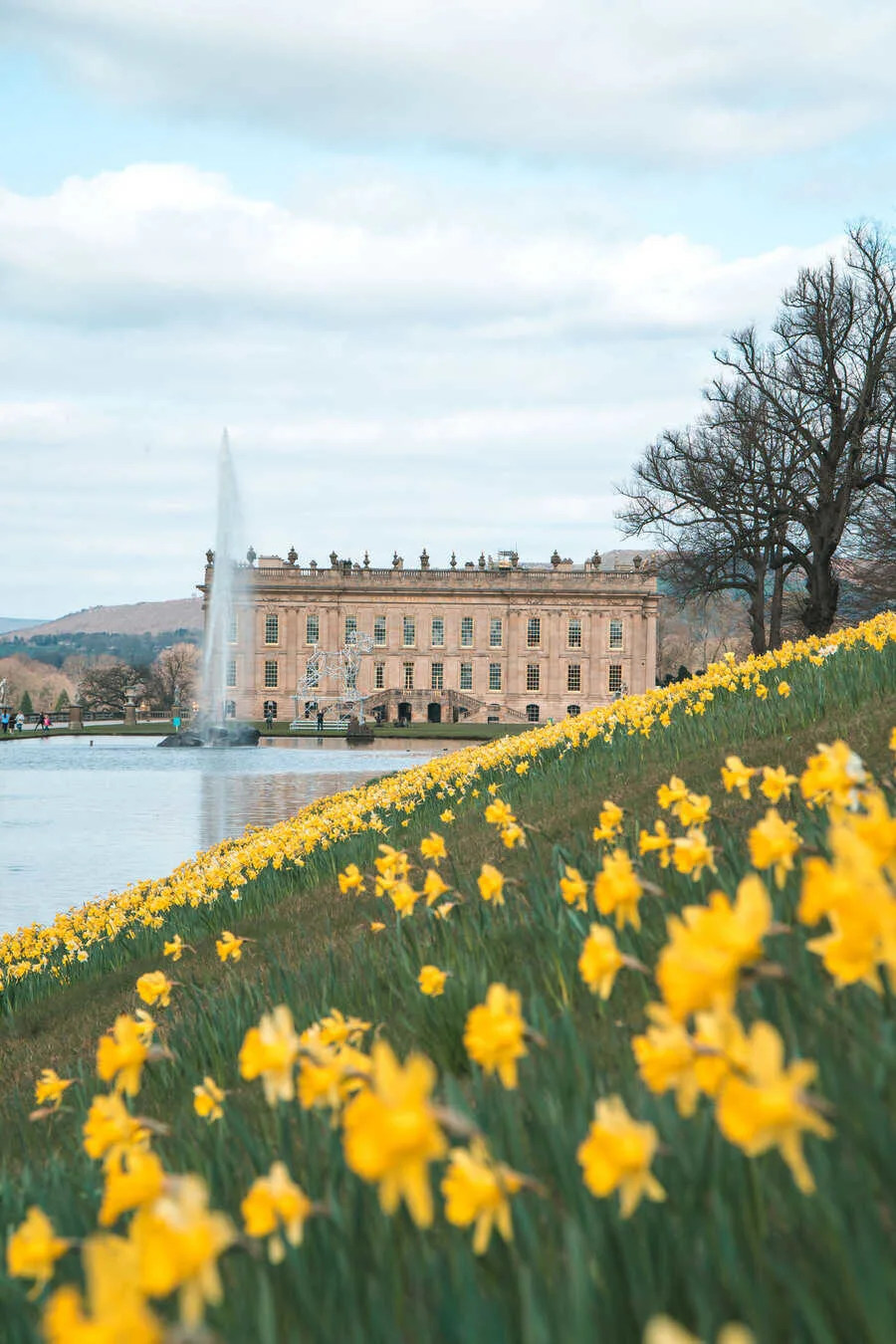
Other outdoor activities in the Peak District include horse riding, fishing and water sports (although not as extensive as the Lake District!).
If you’re a fan of historic houses, castles and stately homes, then you’ll absolutely love the Peak District. Plenty of box office hits and series have been shot in these historic houses, so you might even recognise a few!
You can also visit the world famous Chatsworth House which was used as Pemberley in Pride and Prejudice; Hardwick Hall was used as Malfoy Manor in the Harry Potter films, and the medieval Haddon Hall was used in Kit Harrington’s Gunpowder.
Like the Lake District, the Peaks have a rich industrial heritage that’s worth exploring. Arkwright’s Cromford Mill is part of the Derwent Valley Mills World Heritage Site, and allows a peek into the world’s first water powered cotton mill.
Visit Royal Crown Derby or Denby Pottery to see where the famous ceramics all started, or delve into the remains of the area’s lead mining history at the Peak District Mining Museum.
Where to stay
Whatever kind of accommodation you’re looking for, you’ll definitely find it in the Peaks. Here are some of the best towns and villages to find accommodation:
- Bakewell: this bustling market town is home to the delicious Bakewell Pudding. Full of quaint charm, it’s one of the best Peak District towns.
- Buxton: although not strictly in the Peak District, Buxton is surrounded by it on three sides and is an excellent base for exploring. This spa town has all the amenities you need.
- Castleton: sheltered by Mam Tor, this village is an ideal base for keen walkers. There are plenty of climbs and caves close by, as well as a great selection of delicious tea rooms!
- Eyam: famous for conquering the Black Plague in the 17th century, Eyam is a village steeped in history. You’ll also find a selection of cottages and inns here.
Camping is one of the best ways to experience the Peaks, and there are several campsites in the area. It’s important to note that wild camping isn’t permitted anywhere in the Peaks without prior permission from the landowner.
What makes it unique?
One of the most unique things about the Peak District is its labyrinth of caves and hidden chasms. It’s like a whole underground world just waiting to be explored.
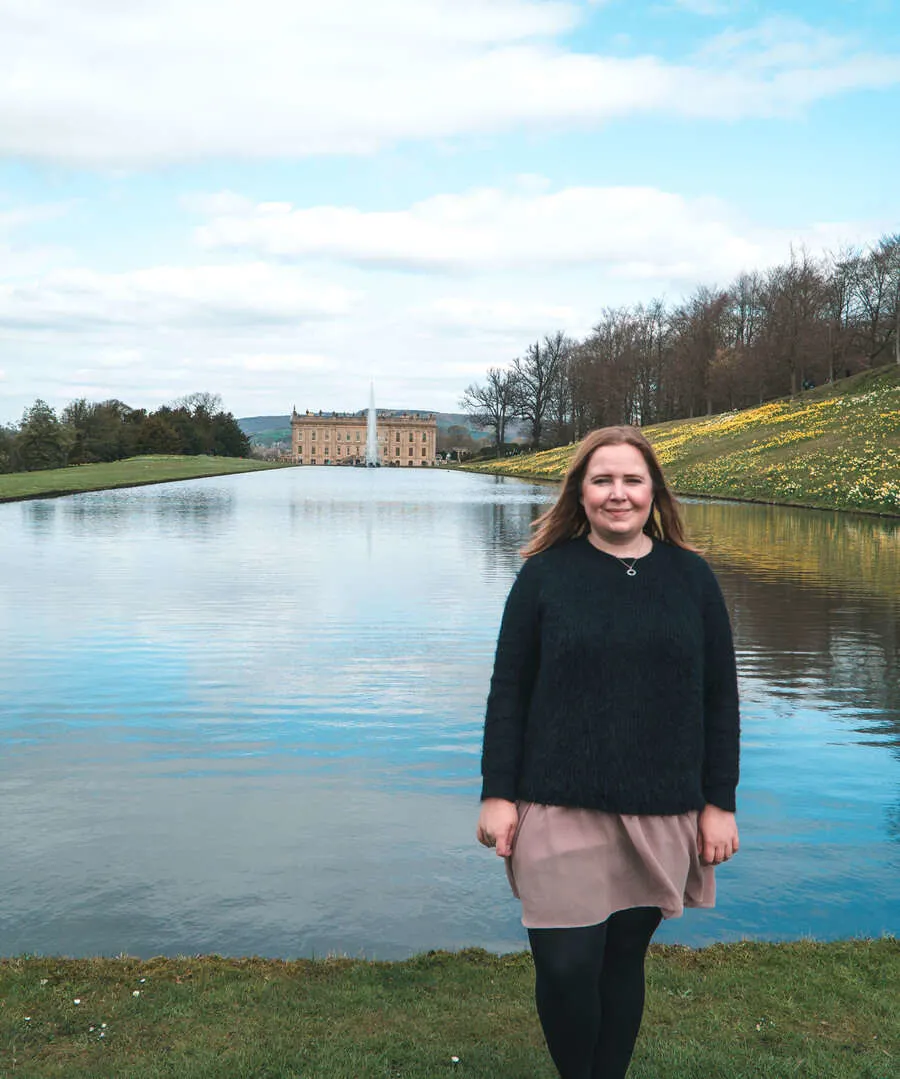
Verdict
Both the Lake District and Peak District are incredible destinations that you should aim to visit at least once in your lifetime. While they both have similarities – rolling hills, high peaks and stunning vistas – they each have something unique to offer. If you’re looking for a diverse range of landscapes and want to spend more time on the water, then the Lakes is for you. If you’re keen on climbing and caving, then the Peaks is the better option. But honestly? Both are worth a visit!
Still Can’t Decide? Why Not Explore Both!?
A tour to the Lake District and the Peak District is the perfect option! I always find it hard to choose as well. The best way to do this is by driving but understand that not everyone is comfortable with driving in foreign countries.
This 5-day adventure will start in York, though the Lake District before heading to the Peak District visiting Chatsworth House and finishing in Cambridge.
It’s a good balance of enjoying the stunning landscapes of the Lake District, the Yorkshire Dales and the Peak District and visiting historic cities along the way like York, Lincoln and Cambridge.
It’s a small group tour which I always prefer as it’s easier to get a better experience with the guide and make friends. Find out more about the 5-Day York & the Lake District, here.

Kat
Hi, I'm Kat, an Australian that moved to London in 2013 to start a new adventure. What a roller-coaster that was! I love helping others move to the UK and people explore the world! I’d be honoured if you’d say, “Thanks!” with a £3 coffee on Ko-fi.

